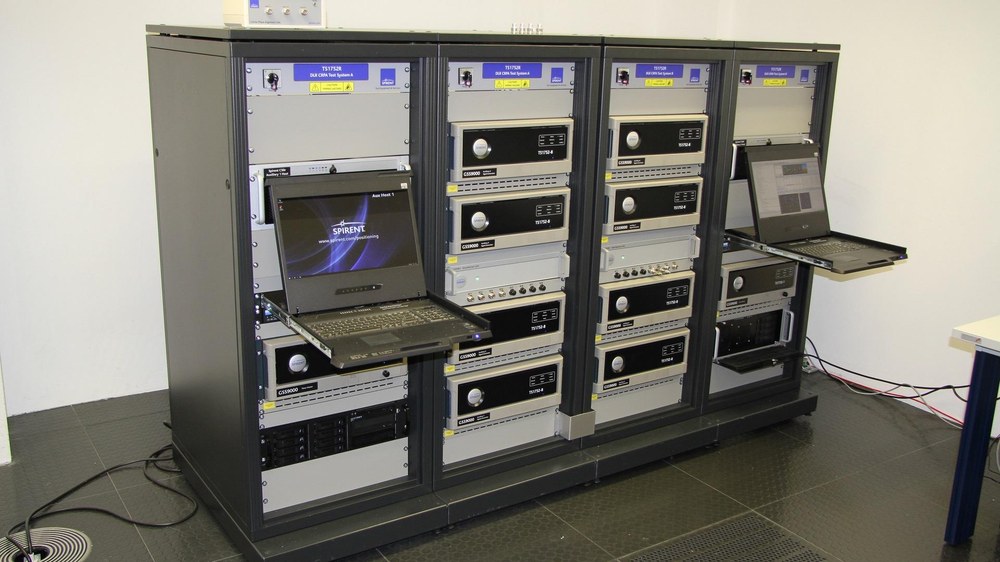Multi-output Advanced Signal Test Environment for Receivers (MASTER)

The large-scale Multi-output Advanced Signal Test Environment for Receivers (MASTER) facility is located at the German Aerospace Center (Deutsches Zentrum für Luft- und Raumfahrt; DLR) DLR Institute of Communications and Navigation in Oberpfaffenhofen; it is a unique and powerful hardware simulation tool for testing and performance evaluation of receivers in global navigation satellite systems such as Global Positioning System (GPS) and Galileo.
Hardware simulation of Global Navigation Satellite Systems (GNSS)
DLR's large-scale MASTER facility has existed since 2006. The core of the facility is a Global Navigation Satellite System (GNSS) signal simulator, which provides signals from all global navigation systems (GPS, Galileo, GLObal NAvigation Satellite System (GLONASS) and BeiDou), as well as many regional augmentation systems (Quasi-Zenith Satellite System (QZSS), Wide Area Augmentation System (WAAS) and European Geostationary Navigation Overlay Service (EGNOS); it can therefore be used for the testing and quality assessment of GNSS receivers. The user has complete control over the specification of the satellite’s orbit, as well as its time and date settings. Key parameters that may have an influence on signal quality can also be adjusted; these include orbit and timing errors, delays in signal propagation in the ionosphere and troposphere, multipath propagation and interference. Specific signal components, such as data and pilot channels, navigation messages and spread codes can be selected individually.
Typical use cases for MASTER include comprehensive testing of GNSS receivers in a quasi-realistic environment, under controlled and reproducible conditions. In the past, MASTER has often been used to facilitate systematic investigations of the performance of newly created processes in the following areas of application:
- Robust GNSS receivers with multipath and interference suppression;
- Multi-system, multi-frequency signal processing for GPS/Galileo receivers;
- Differential GNSS systems, such as Ground Based Augmentation Systems;
- Multi-antennae receivers to determine antenna attitude;
- Array GNSS receivers with digital beam forming for spatial suppression of interfering signals;
- Detection of spoofing and meaconing (threat analysis);
- Calibration of time receivers.
Since the facility was expanded in 2018, it has provided the option of designing simulation scenarios with the following new features:
- Generation of up to eight phase-locked radiofrequency signals (for simple simulation of large antenna arrays or several antennae distributed across a vehicle);
- Phase-locked generation of strong interference signals (interference-to-signal ratio up to 100 decibels) on all eight radiofrequency outputs (for testing direct incidence of interference signals and the corresponding interference suppression in an array GNSS receiver);
- Support for flexible signal modulations with spread code sequences and navigation messages, which can be defined completely by the user (for example, for performance analysis of signal options for the next generation of GNSS).
